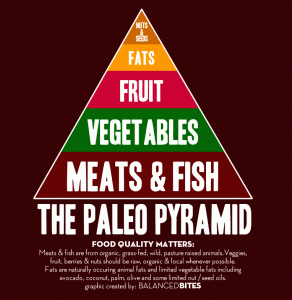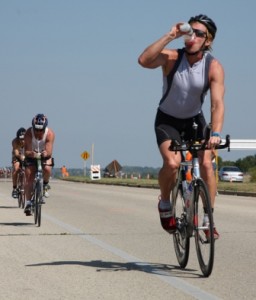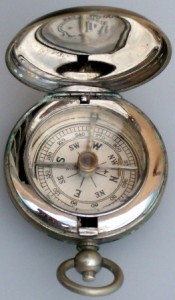When it comes to nutrition, you might ask yourself a lot of the same questions I’ve had lingering for a while: What should I eat before I train? What should I eat while I’m training? Should I use the same fuel routine I’d use for a 4-hour training session as I would for a 1-hour session? Etc., etc. To make things even more complicated, I’m a strong believer and follower of the paleo diet, making popular endurance athlete protocols such as the pre-race “carbo-load” out of the question. There seems to be so much information out there about training nutrition that I’ve been at a standstill in how to move forward and actually make it all work for me. Anyone else with me??
I remember reading an article just a couple weeks before my first Olympic distance race about how training your body to work off of fats is much more efficient than using carbs. The idea made total sense to me, so I started eating nutrition bars made almost purely of almond butter while training. I tried it out on a couple bike rides before the big race and it seemed to work ok. So, when race day came, I was prepped with basically 3 hours worth of almond butter bars to get me through. What. An. Idiot. My body was not adapted to work off of that food source, not to mention choking down almond butter bites while biking or running is not very pleasant. Nevermind the fact that I completely misinterpreted the point of the article, thoughtlessly changing courses in my training/nutrition routine just weeks before my race was an ultimate “no-no.”
So, my first lesson for any triathlon novice: If you’re going to experiment with nutrition, do it in the early stages of your training and stick with what works. Do not make any major changes in the weeks leading up to your race! If you want to try out something new, wait until you’re past the big day.
After doing some reading, I’ve developed the below paleo-friendly guidelines for fueling yourself through training. For full disclosure, these are guidelines based on the book The Paleo Diet for Athletes, which I will be trying out for myself. I may very well come back and revise them based on my performance and how I feel post-workout. Regardless of what routine you choose to follow, it’s important to adapt it to your own needs!
Everyday Fueling
Remember – Exercise is only a small part of your training. The rest of your training happens in the kitchen. Eat smart and clean every day. Your body will love you for it, especially during those long training sessions.
Main points I will follow in my daily diet:
– 3-4 oz. Lean proteins with every meal (chicken, beef, fish, eggs)
– Veggies with every meal
– Some fats with every meal (almonds, cashews, pecans walnuts, avocado, olive oil)
– Occasional fruit, always eaten with protein (try to stick with low glycemic fruits)
– Lots of water!
– Supplements: fish oil, CoQ10, daily multivitamin
Absolutely zero:
– Flour products (bread, cake, cookies, scones, tortillas, pastries, etc.)
– Grains (yes, you heard me)
– Sugars (artificial sweeteners or refined white sugar)
– Dairy (cheese, milk, butter, cottage cheese, etc.)
– Potatoes, corn beans or other starchy vegetables
Pre-workout Nutrition:
Pre-workout Nutrition Guidelines
General Points to Follow During Exercise:
– Only eat during low intensity
– Consume 400 – 600 calories per hour
– Consume the same amount of H2O as you sweat out (this will vary depending on intensity, climate, duration of exercise, etc.)
– Consume 500mg of sodium for every 16 oz. H2O you consume (don’t need as much during the summer)
– In general, consume more liquids than solids
Nutrition Guidelines for 2-90 Minute Training Sessions
Nutrition Guidelines for 90 Minute – 4 Hour Training Sessions
Nutrition Guidelines for 4-12 Hour Training Session
Post-workout Nutrition:
Immediate Post-workout Nutrition
Main Points to Follow for Continued Post-workout Recovery (Following Immediate Post-workout Meal):
– Continue recovery fueling until you meet the duration of exercise. For example, if your exercise duration was 90 minutes, your immediate post-exercise meal should be consumed within 30 minutes (see above), and subsequent refueling should take place for another hour thereafter.
– Carbs are very important here
– Moderate – high glycemic carbs
– Begin eating solid foods within this timeframe, especially starchy veggies like sweet potatoes and dried fruits
– Consume 0.75 grams carbs per pound body weight per hour
– 4:1 carb:protein
– Continue to drink water!
